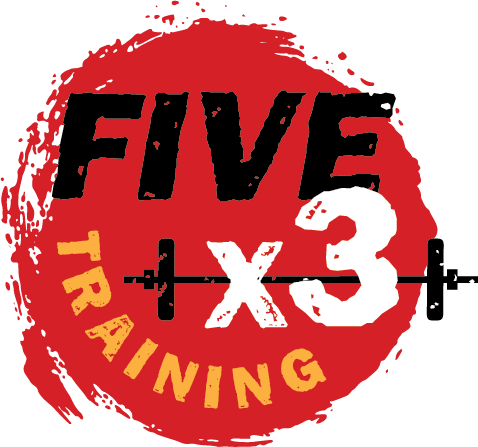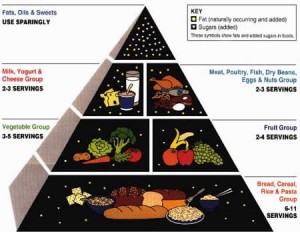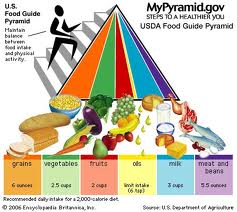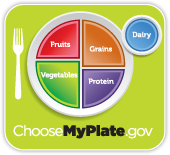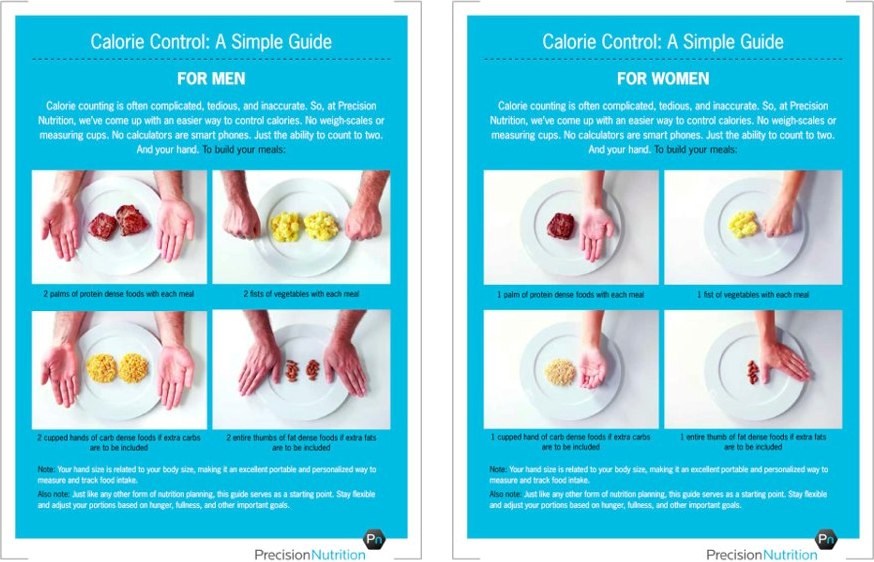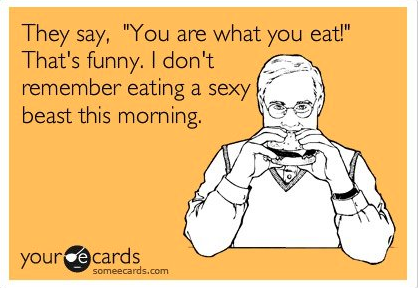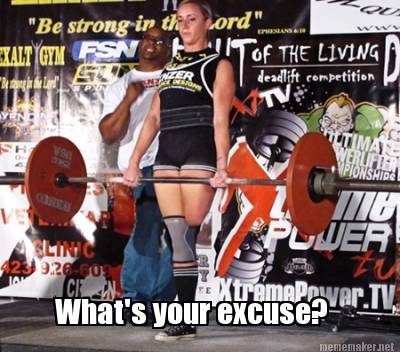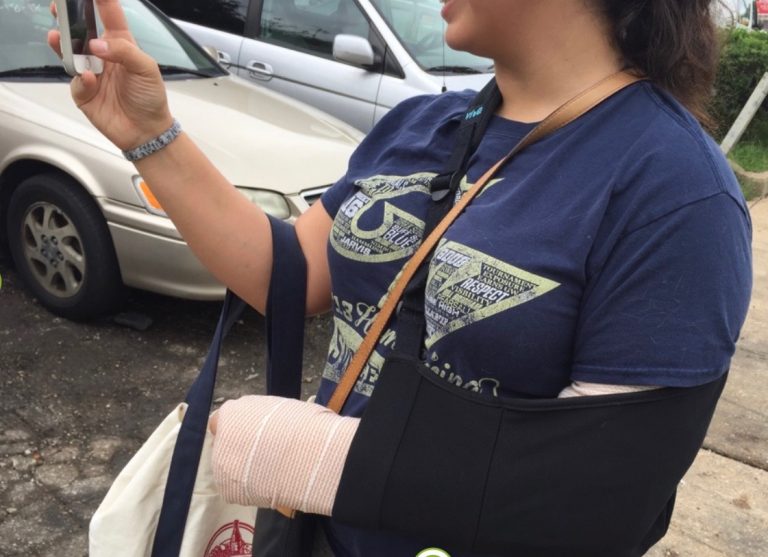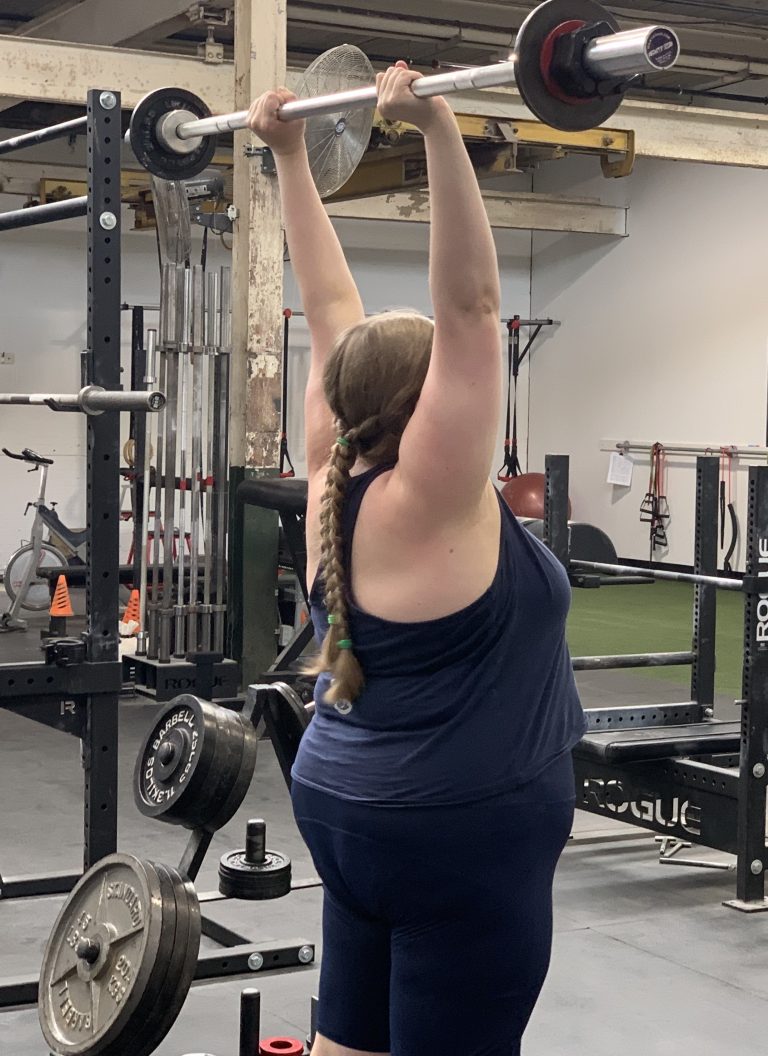I hosted a Fivex3 Training Nutrition seminar a month ago at my gym. We had about 13 people come out on a Sunday morning to learn a little more about how to eat, what to eat and why we tend to fall into the same traps when it comes to eating and weightloss and/or fat loss.
I started my talk that morning with one question: What is “Good Nutrition?” Answers consisted of “healthy eating,” “not a lot of sugar,” “eating more vegetables.” All good responses. All simple and basic. But instead of thinking about good nutrition as just “eating more vegetables,” try thinking about what you hope to accomplish by eating a different way than perhaps you do now.
I asked the group “So, what should your nutrition program help you accomplish?” Well, there are three things a good nutrition program should do simultaneously:
First, a good nutrition program should help improve your body composition. If your goal is to lose inches and fat, a good nutrition program will help you do this. Over an extended period of time. Sure, juice cleanses, drug supplements and surgeries can help you improve the way you look too….but there is a risk with all of them and you will end up doing your body more harm than good.
Second, a good nutrition program should improve your health. It should improve your health profile and help your body work and function the way it should, outside AND inside. Severely restricting your calories, eliminating an entire food group, adding supplemental vitamins and minerals could and most likely, will, do more harm than good.
Third, a good nutrition program should improve your health and performance. It should improve how you function in and out of the gym. Once again, additional dangerous supplements, crash diets do nothing but detract from your performance and cause more harm than good.
Remember to keep this in mind as you read on and think about your current nutritional program. Is your program helping your body composition, improving your health AND improving your performance? If not, you may want to consider taking a better look at your current nutrition program and start experimenting with new and better ways of eating.
Once we reviewed the foundation of what makes a good nutrition program, we talked about the various diet recommendations over the past 20 some years, going back to 1992 with the USDA Food Pyramid.
This one goes WAY back with us all believing that fat was BAD and pasta, bread, grains should make up the majority of our diet. But as we have evolved, so has our eating. In 2005, the USDA came out with this new pyramid:
A little better…as now it has increased the amount of vegetables and decreased the amount of starches as well as emphasized the need for physical exercise. But it still could be improved upon……
In 2011, the USDA tried their hand again at its recommendations and introduced MyPlate.
Now we start to see an ACTUAL plate (which is what we typically eat food off of, not a pyramid…riiight??? Duh. ) MyPlate was designed to eliminate some of the complexity of the food pyramid, which it did. People can relate to a plate and it presents you with a good idea of what should be on YOUR plate. However, there is still a big emphasis on dairy for your “go to” beverage as opposed to water or other non-caloric drinks. Healthy fats are not listed at all and there is still more emphasis on grains and fruit at EVERY meal and not enough emphasis on more vegetables and protein.
So, what to do? As a PN coach and someone who really got on track with her own eating and eating habits as a result of Precision Nutrition’s recommendations, allow me to introduce the PN Meal Plate:
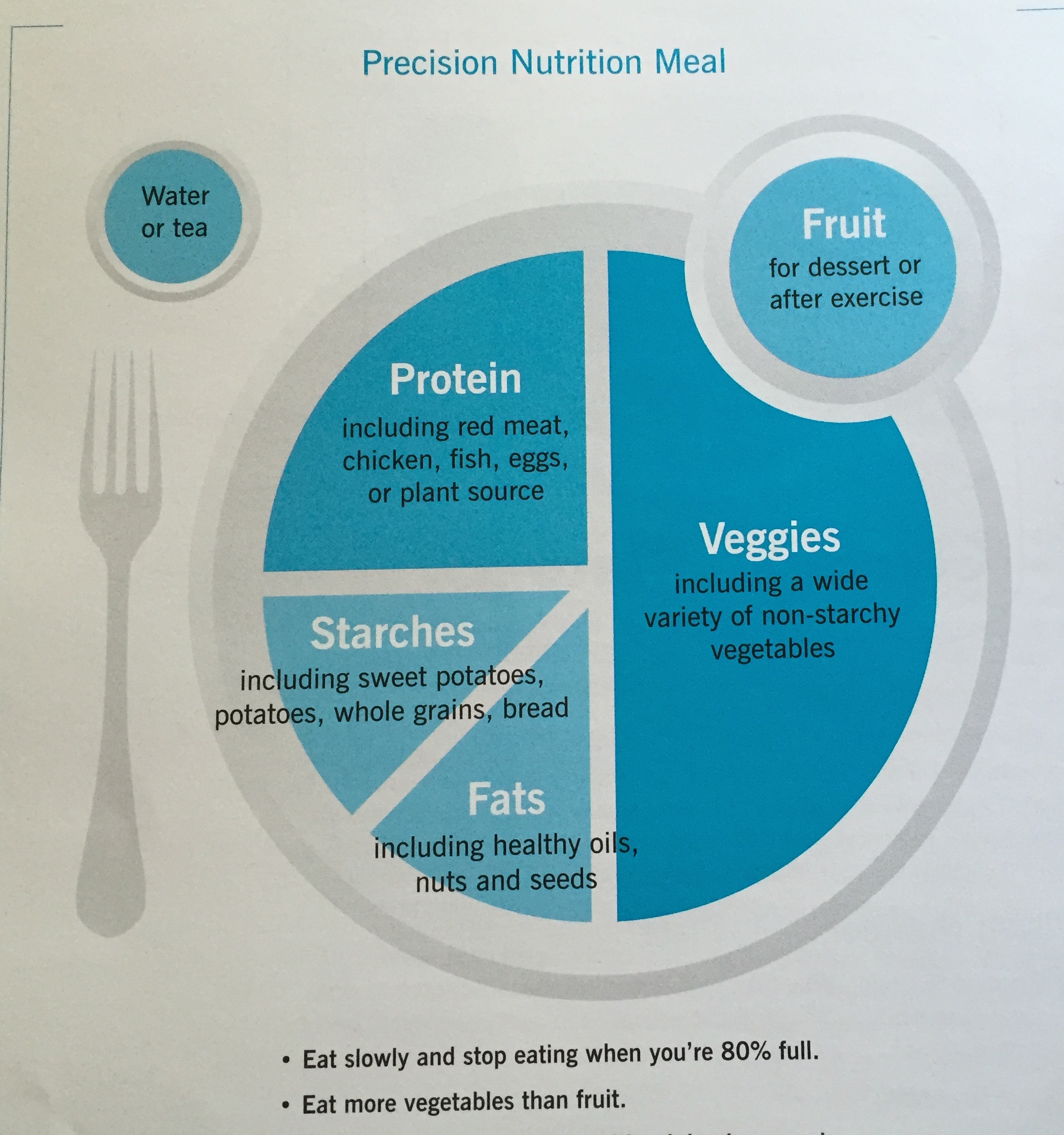

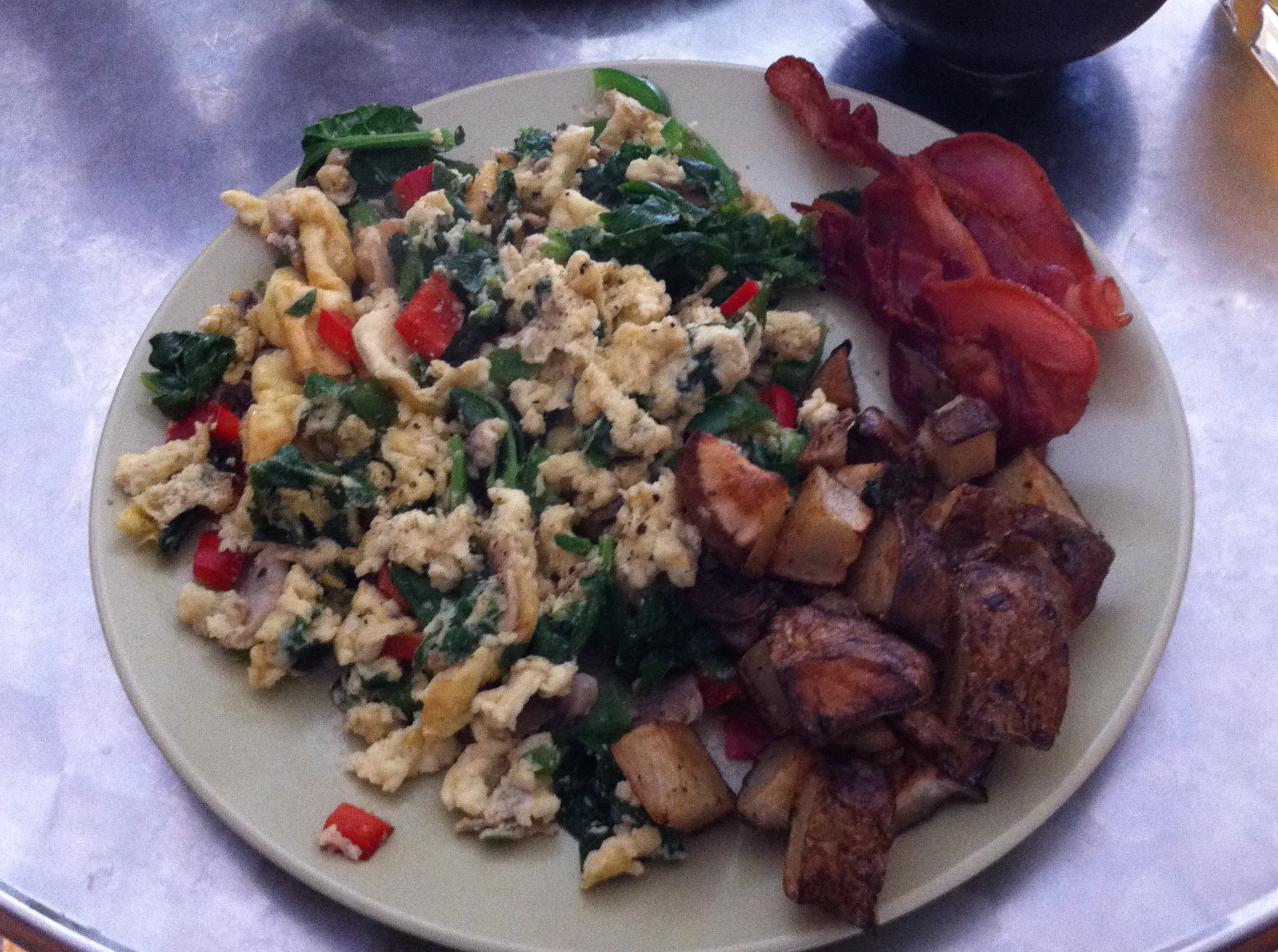
Notice the portion size for vegetables. The largest portion on this plate is vegetables. In fact, it’s HALF of the plate. This is followed by protein, the second largest. Third is starches, mostly whole and then healthy fats like oils and nuts. And a Plant Based meal will not look much different, with the exception of the protein portion which will include plant protein such as beans, lentils, legumes, tofu, etc. Fruit is part of this plate as a dessert or perhaps after exercise (breakfast is a good time to have some fruit too) and the beverage of choice is water or tea or some other non-caloric beverage. So.….Does your plate look like this plate??? If yes, then you are definitely already one step ahead of the crowd. 😉 If not, then read on.
Habits: You gotta have ’em.

When it comes down to losing weight, gaining weight or maintaining weight, those individuals who have made the best progress are the ones who focused on habits rather than a quick-fix-lose-it-fast-today diet plan. These individuals took the time to really think about why they eat the way they do, how they could eat differently and what their plates should look like. Habits. We all have them. Think of some of your own habits. Maybe every morning, you get up and take a shower. Every single morning. That is a habit. I typically take my showers the night before because I like to sleep in. 😉 We brush our teeth every night before going to bed. Habit. Morning coffee. Early morning runs. Training at the same time every other night. These are habits that we have built into our daily routine. We do them automatically without thinking about them. So, what if we did the same thing with our eating? Instead of trying to starve ourselves or jump on the next bandwagon of juice cleanses, celery diets and fast track weight loss programs, we started getting a little more real with ourselves and our own habits. Step back and really take a hard look at your eating habits. Do you skip breakfast some days and other days, grab whatever you can on the way to work? Do you walk by the SAME Dunkin Donuts on your way to the gym? Is there another path you could take instead? We have some habits that we could stand to break and other habits we could and should really try to instill in our daily lives. The following five habits are at the epicenter of the PN program, and I have definitely made them habits with my own eating.
Five Simple Precision Nutrition Habits
1. Eat slowly and stop at 80% full.
2. Eat protein dense foods with each meal.
3. Eat vegetables with each meal.
4. Eat some carbohydrate-dense foods with most meals.
5. Eat healthy-fat-dense foods with most meals.
All five habits are important but habit number 1 is by far, I think, the hardest habit to work on AND the most important one because most of us have a bad habit of eating too quickly and eating everything on our plate. We heard growing up “I want you to clean your entire plate. There are starving children in…..” We grow up thinking that we have to ALWAYS eat everything on our plate. But in reality, we don’t. We don’t need to stuff ourselves silly. We should not want to feel “full” after every meal. This is probably the hardest habit for me. I struggle with it daily. I really have to work on eating slowly and mindfully. I have to force myself to put my fork down, sit back, chew slowly. I typically eat my meals in about 15 minutes. Not bad. A good goal is to work towards 15-20 minutes. That is tough so don’t try to do it right away if you have been eating your meals in under 5 minutes. Just start to think about eating more slowly. Grab a book to read while you eat. I actually find watching television HELPS me slow down my eating. In order for me to understand what is going on, I have to stop eating so my chewing doesn’t interfere with listening. It takes me about 20 minutes at lunch and dinner this way, and I never feel full after these meals.
The other four habits will take time to develop and follow but they are far easier than number 1 and should be incorporated into your daily meals slowly, especially if you are not used to eating a lot of protein or vegetables. Notice that there is not a habit that says “Do not eat any junk food.” It’s not so much about eliminating foods you are eating now but rather eating more of the foods that will make you full, keep you satiated longer and of course, are healthier for your body, body composition and performance goals. (Remember way back at the top reading about what a good nutrition program should help you accomplish?) By replacing foods that better support your goals, you will slowly find that you have little room for the “other food.” Eventually, you discover that you do not have anymore room in your stomach for those “other foods.” When this occurs, you have now formed better eating habits. And don’t expect these habits to happen immediately. It usually takes you about two weeks to form a habit. You need to practice and practice and practice. Most people can only handle one habit at a time too so try not to pile on each one at once. 😉
Other good habits include:
1. Exercise for 30 minutes a day
2. Drink at least 8 cups o water
3. Sleep at least 8 hours (including naps)
4. Eat 4-5 meals a day.
Here is a link to a pdf that lists these habits. It is a great resource sheet that I have used for myself and my clients. 5-daily-habits-for-fat-loss.
Calorie Control: Say it ain’t so!!
After our discussion on habits, I moved on to talk about calorie control. This is always a headache of a subject. I cannot tell you how many calories your body needs. We all need different amounts of food based on who we are, our activity level, male or female. Counting calories is not as simple as it sounds. However, measuring and weighing can help you get a baseline idea of portions sizes. And while PN poo-poo’s weighing your meat and measuring out your rice, I do encourage people to use these tools as needed until they get a better idea of what a half of cup of rice looks like or what about 4-5 ounces of turkey burger is. Once they have a better handle on portion sizes, then they can start to eyeball their portions or use PN’s calorie counting guide. All in all, their guide is the eye ball version of measuring cups and scales. Take a look.
You can see from this simple guide that A. Men need to eat more than women and B. It goes back to the old “your hand is the best measurement” trick. 😉 But what does this look like in real time? Below is our lunch. Diego’s lunch is on the left and my lunch is on the right. What do you notice about our lunches? Look at the picture above. It is pretty identical to the His/Her portions in the calorie counting guide. (The vegetables don’t show the whole picture so think back to the portion of vegetables from the PN plate.)

Thinking about food and preparing food should not give you a headache. If thinking about cooking and grilling and shopping and preparing foods starts giving you a migraine, STOP. It should’t be that complicated. It is NOT that complicated. And before I get into the last part of the seminar, let me give you a few additional tips:
1. Drink more low calorie or non-calorie drinks. Instead of stopping by Starbucks everyday for one of their “Mocha frappuchino chocolate chocolate frappuchinos,” stop by every other day, then every two days, then once a week. They add up quickly.
2. Try to eat mostly whole foods. Protein bars are good when you are crunched for time, but you don’t want to make supplements the majority of your diet. Eat REAL food.
3. PLAN AHEAD!!!!! It really is true: “Failing to plan is planning to fail.” Don’t fall into this trap. (Discussing this in more detail in the next paragraph.)
4. Try to eat as varied foods as possible. Experiment. You may discover you really do LOVE lima beans. 😉 (Me, never!!!!)
5. 90% compliant, 10% eat what you want! It sounds boring. It sounds cliche. But it works. Eat 90% of the time that keeps you on track – vegetables at all meals, protein at all meals, non-caloric drinks. 10% – Enjoy that pizza. Have a beer or two. Eat those mozzarella sticks. 😉 It’s not a “cheat meal.” It’s understanding that you can still have your cake and eat it too if 90% of your meals look like your PN plate. It’s practical and it works. And if you are consciously thinking about what you are eating, when you are eating and how you are eating, 90%/10% really does work. But it takes time to make this a habit. So don’t rush it.
Fail to Plan = Plan to Fail
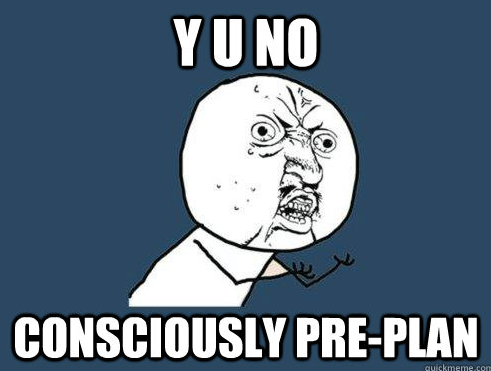
So when do you find the time to do all this???? Well, you gotta make the time. I know, I know….you are really busy. Work, family, birthdays, vacations….if you have four hours to binge watch Orange is the New Black or Bloodlines (Just got into this show!!), then you have ONE hour to cut some damn vegetables. Am I right?
Food preparation. If you don’t prep it, you won’t eat it. Believe me. And I truly believe that if more of us simply followed these food prep tips, we would be able to eat better at home and out.
Here are a few tips for food preparation:
1. Pre-cut your vegetables. Remember your PN plate? Half of the plate is vegetables. So get going and chop them up – Sunday afternoon, Saturday morning, Monday morning while you are prepping breakfast – find that hour and get chopping. I typically either chop my vegetables on Saturday afternoon after I get home from the gym or if I can get it in Saturday, Sunday morning. Either way, I get ‘er done! This way, I have no excuse for not making a salad for lunch or dinner or throwing in some peppers into my eggs in the morning. Baggies, containers…whatever works for you.
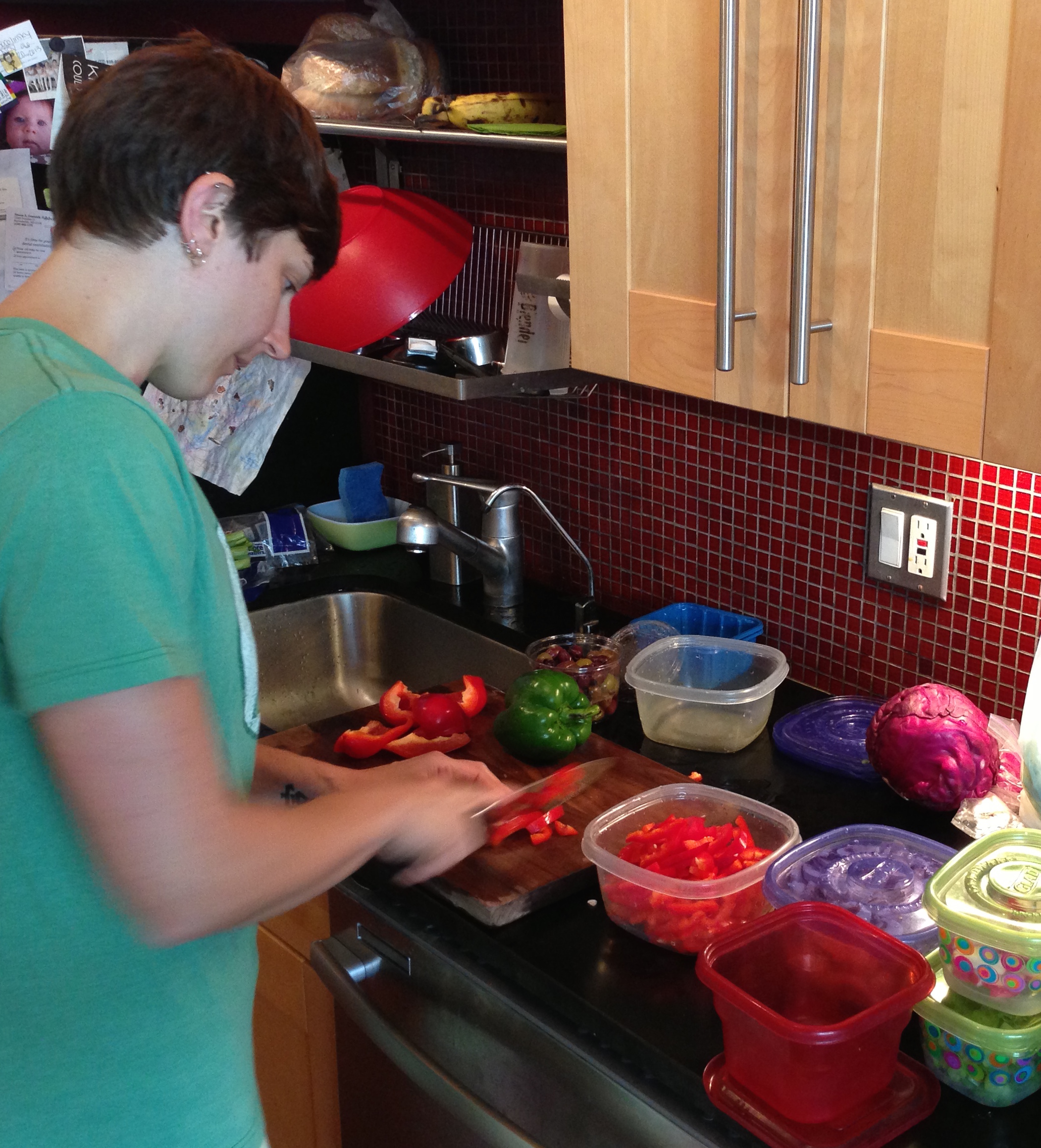
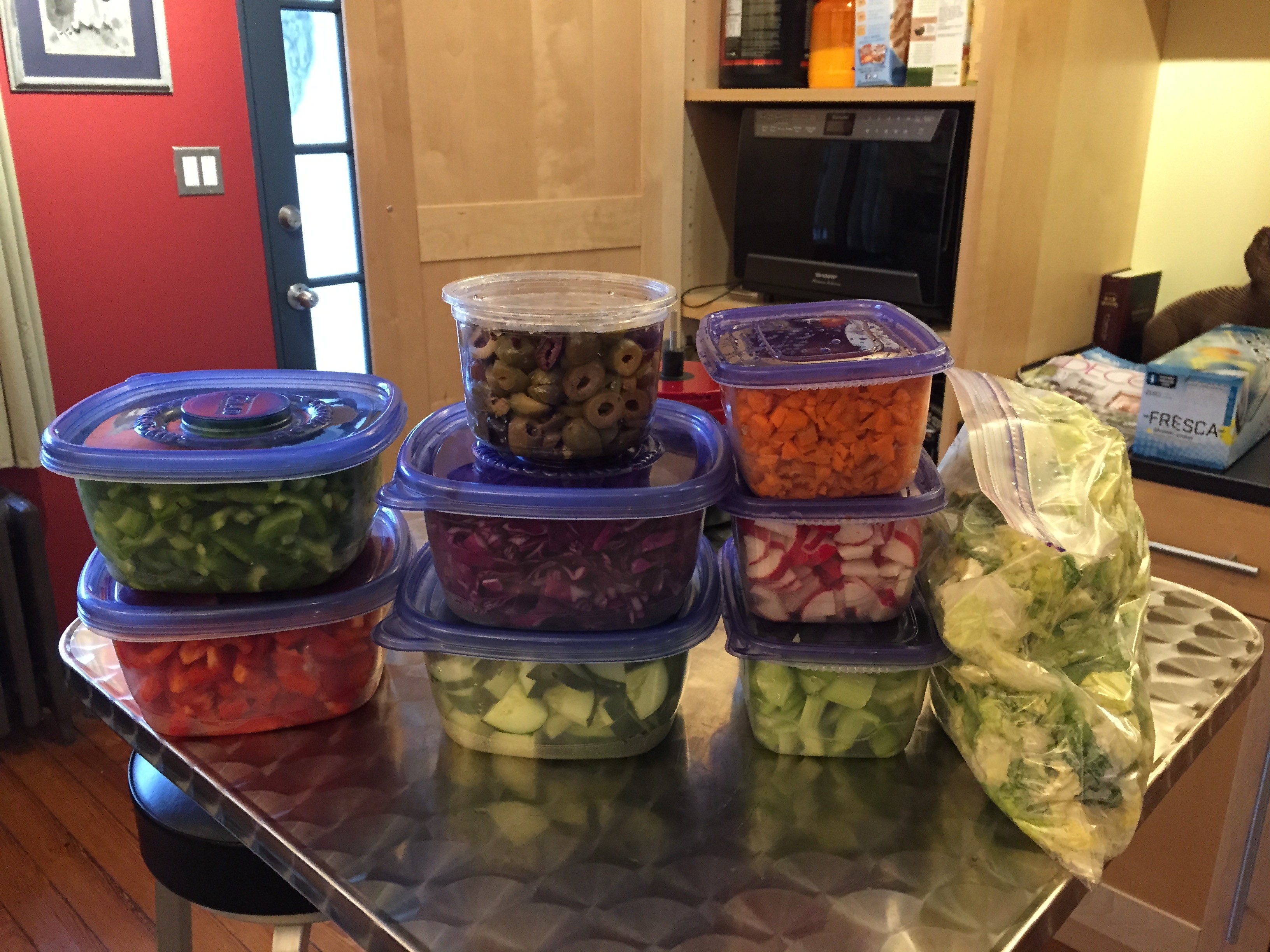
And while you are chopping, you can listen to Dana Carvey sing this classic rock ballad – “Choppin’ Broccoli.”
2. Pre-cook your protein. Grill your chicken or burgers ahead of time. Do it while you are chopping your vegetables. We grill our burgers for our lunches on Saturday or Sunday. For dinner, we grill beef burgers one night, chicken sausages from Whole Foods another night. We grill our fish (prepped with some kind of seasoning) as well as our pork chops. We grill 365 days. Snow, rain, heat. Oh yeah, we grill.
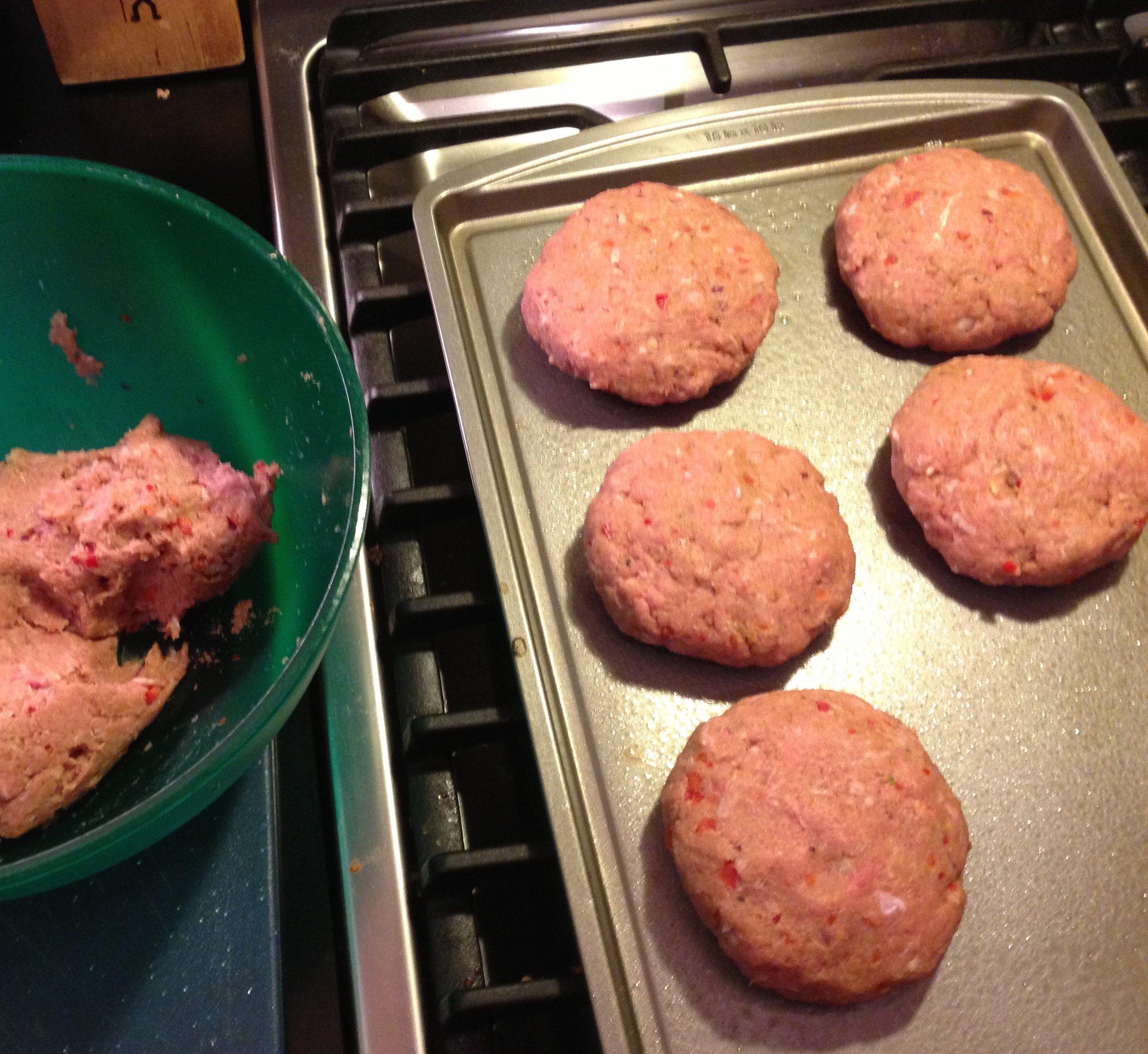
3. Buy meal sized containers for your food. This way you can pre-pack your lunch the night before. You can easily keep the PN plate together with the right size tupperware.
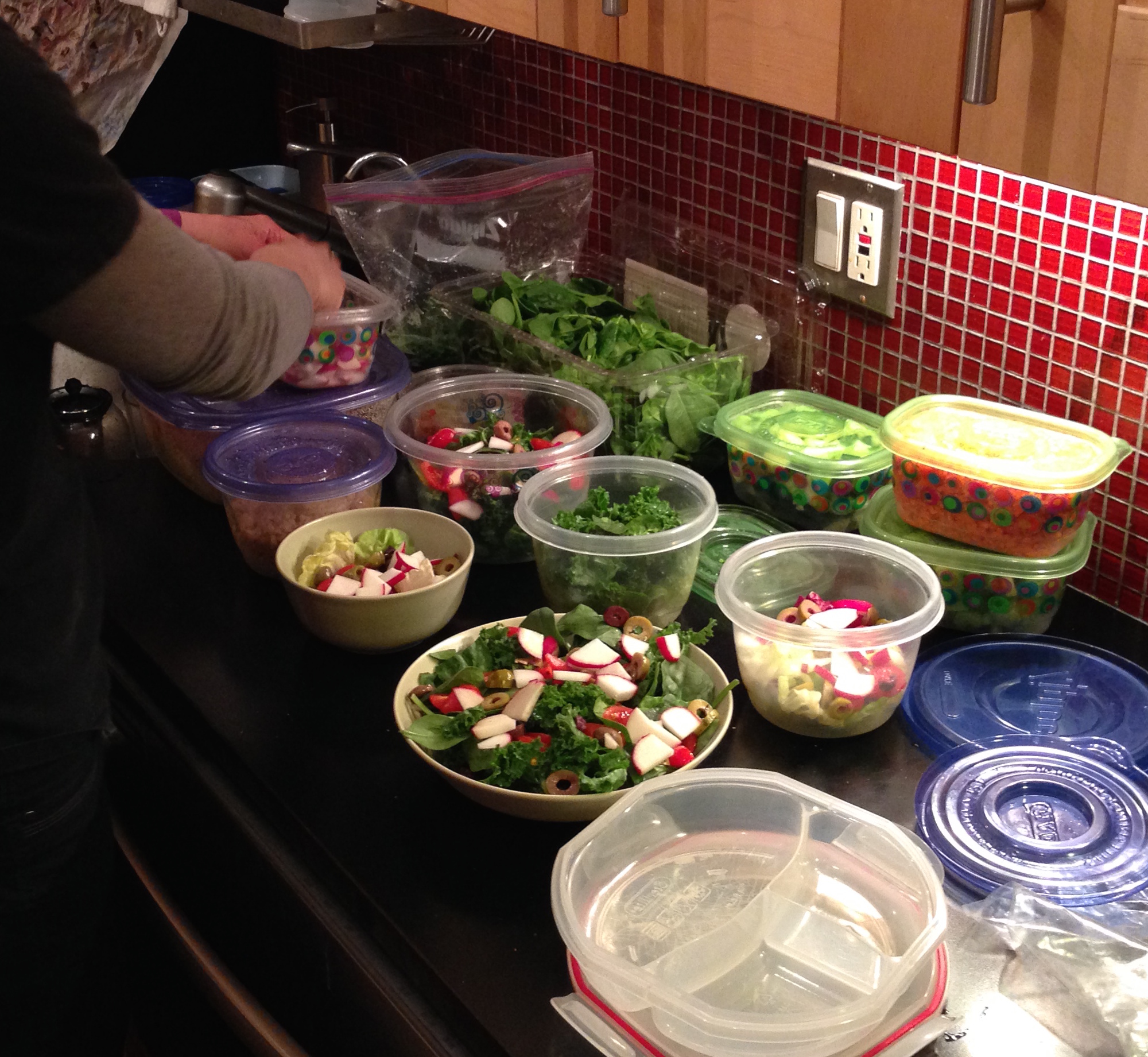
4. Use blenders and shaker bottles. Pressed for time some days??? Shakes are an awesome way to get a quick meal in without a lot of preparation or cooking. You can pre-blend shakes at home and then store them at work. Or buy a small blender at work and create a shake right then and there.
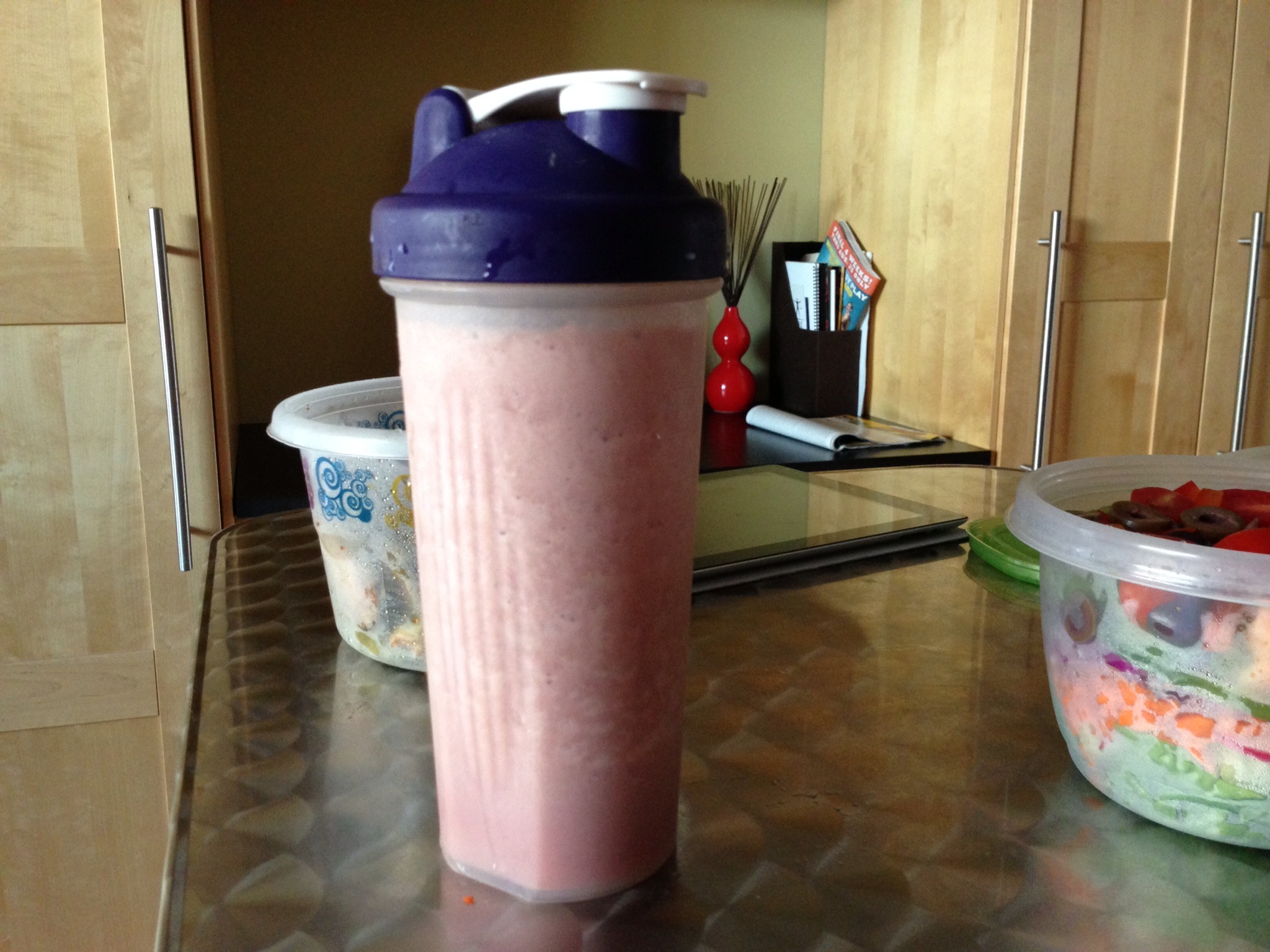
Remember, Rome was not built in a day. Give yourself time.
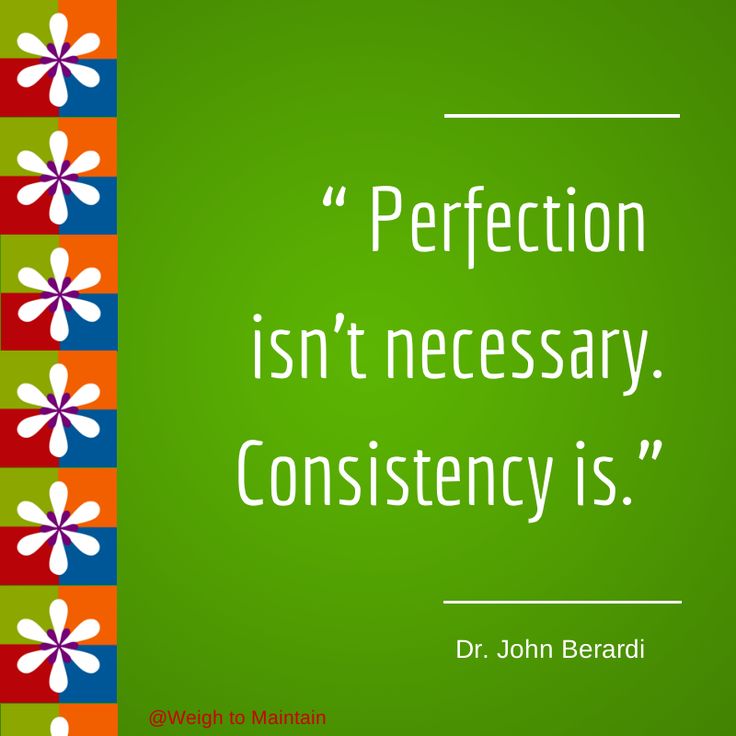
I wrapped up the seminar with a few words about maintenance eating. You have taken the steps to develop better eating habits. You are eating slowly, cutting your vegetables, cooking your protein, eating 90% healthy….but sometimes you just really want those damn fries. And youfeel bad about that. Don’t. Remember, it’s going to be a little bit of a roller coaster ride. You will have your up’s and down’s but if you are working on being 90% consistent with your eating and your exercise, you have already won.
When it comes to maintenance eating, there are a few things for you to keep in mind:
1. Have a positive attitude. Things will go off track at times. You may drink more wine than you should have one night. The restaurant that your friend chose has a menu that is not compliant with your habits. It’s okay. Take a deep breath and relax. Tomorrow is another day. 😉
2. Be satisfied with maintenance. But what about those last five pounds???? If you stress about it, you will not be able to eat normally. You have made great progress. Enjoy the progress you have made, not the “but what about the..?” Be proud of what you have accomplished.
3. Find foods that work for you. Remember, eat what you enjoy. Don’t like to eat too many salads? Grill your vegetables. Steam your broccoli. Make vegetable soup. Create meals that work for you and your tastes and appetite.
4. Eat without guilt and for enjoyment. I can’t tell you how unhappy it makes me when I read articles or stories about people’s fear of food. Food is meant to be enjoyed, not feared. When you develop better habits and better awareness of eating and food, you will find that you will begin to enjoy eating again. It really is not as complicated as people want to make it out to be.
5. Get motivated by your health. How is your progress at the gym? Is your deadlift getting better? Do you have more energy now than you did before? Is your blood work better? Are you sleeping better? Your health should be your number one priority. Get motivated by how you are feeling physically and mentally.
6. And last, but not least, make YOURSELF a priority. Give yourself that hour at the gym or for that afternoon walk. Take a spin class. Eat for your health. Eat because it makes you feel better, not worse. You have only one body. Take care of it now. 😉
